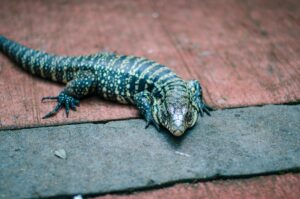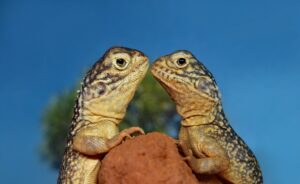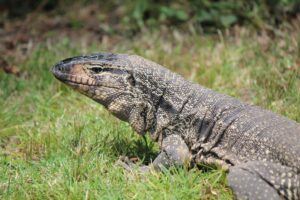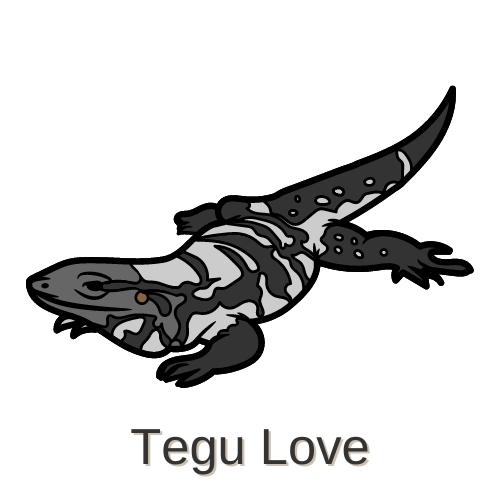The tegu lizard is a fascinating creature that has many unique characteristics. This article will provide you with all the information you need to know about this reptile, from its physical features to its behavior in the wild. We’ll also discuss some of the most common myths and misconceptions about tegus. So if you’re interested in learning more about these interesting lizards, keep reading!
Tegu Lizards
Tegu is a large lizard native to South America. They can grow up to four feet in length and weigh up to eight pounds. The largest invasive species is the black and white tegu, which can reach lengths of five feet or more. Tegus are very common pets in the United States, but they are also found in the wild in Florida, Georgia, and South Carolina.
Tegu lizards are carnivores, meaning they eat meat. In the wild, their diet consists mostly of insects and small mammals. However, they have been known to eat fruits and vegetables as well. In captivity, tegus typically eat a diet of commercial lizard food, which is available at most pet stores.

Tegus are relatively docile creatures that make great pets. They are also very intelligent and can be trained to do simple tricks. However, they can be aggressive if provoked, so it’s important to handle them with care.
See More: Tegu vs Monitor: What’s The Difference?
Argentine Black And White Tegus
The white tegus and argentine black, also known as the giant tegu, are the largest tegu species. It can reach lengths of five feet or more and weigh up to eight pounds. This lizard is native to South America and can be found in Argentina, Bolivia, Brazil, Paraguay, Uruguay, and Venezuela.
Where To Find A Tegu Lizard
If you’re interested in finding a tegu lizard to add to your family, there are a few different places you can look.
First, check with your local pet store. Many pet stores sell tegus, and they may even have breeders who can help you find the perfect lizard for your home.
You can also find tegus for sale online. There are many reptile breeders and dealers who sell tegus through the internet. However, it’s important to do your research before buying a lizard from an online source, as there are many scams and fraudulent dealers out there.
See More: Colombian Tegu Lizard: Everything To Know
Finally, you can sometimes find tegus in the wild. However, it’s important to note that it is illegal to remove a tegu from its natural habitat. If you do find one in the wild, it’s best to leave it there and enjoy watching it from a distance.
Diet Of The Tegu Lizard
As we mentioned earlier, tegus are carnivores. In the wild, their diet consists mostly of insects and small mammals. However, they have been known to eat fruits and vegetables as well.
In captivity, tegus typically eat a diet of commercial lizard food, which is available at most pet stores. This food is specifically designed to meet the nutritional needs of lizards. You can also supplement your tegu’s diet with live foods, such as crickets and worms.
See More: How Much Is A Tegu Lizard?

Tegu Lizard Care
If you’re thinking about getting a tegu lizard as a pet, there are a few things you should know first. Here are some tips on how to care for your new reptile friend:
- Choose the right size enclosure. Tegus need a lot of space to move around, so make sure you get an enclosure that’s big enough for your lizard to roam freely. A 10-gallon tank is a minimum size you should get for a baby tegu, but an adult will need at least a 20-gallon tank.
- Provide plenty of hiding places. Tegus like to hide, so give your lizard a few places to do so in its enclosure. Hiding places can be made out of rocks, logs, or pieces of wood.
- Add plants and branches for climbing. Tegus are good climbers, so you’ll need to provide some things for your lizard to climb on in its enclosure. Live plants and branches are great for this purpose.
- Keep the temperature and humidity levels in the enclosure consistent. Tegus come from tropical climates, so they need warm temperatures and high humidity levels to stay healthy. The enclosure’s temperature should be between 75 and 85 degrees Fahrenheit, and the humidity should be approximately 80%.
- Give your tegu a bath once a week. Tegus like to bathe, so you should give your lizard a weekly bath in lukewarm water. This will help keep its skin and scales healthy.
See More: Blue Tegu Lizard: A Beginner’s Guide
Tegu Populations Spreading In Florida
Tegu lizards are not native to Florida, but they have been found in the wild in the state in recent years. It’s believed that tegus were introduced to Florida through the pet trade.
While tegus are not considered to be a threat to native wildlife in Florida, they can be a nuisance to homeowners. Tegus dig burrows and can damage landscaping. They also eat fruits and vegetables, which can attract other pests like rats and snakes into your yard.
If you live in Florida and find a tegu on your property, the best thing to do is to contact your local animal control agency or the Florida Fish and Wildlife Conservation Commission for assistance.
Can Tegus Hurt Humans?
While tegus are generally docile creatures, they can be aggressive if provoked. If a tegu feels threatened, it may bite or scratch the person who is threatening it.
See More: Does A Tegu Lizard Bite?
Tegus can also transmit salmonella bacteria to humans through their feces. This bacteria can cause diarrhea, vomiting, and fever in people who come into contact with it. It’s important to wash your hands thoroughly after handling a tegu or coming into contact with its enclosure.

Conclusion
Tegu lizards make great pets for reptile lovers. They are intelligent and can be trained to do tricks, but they need plenty of space to roam. If you’re thinking about getting a tegu lizard, make sure you do your research first and be prepared to provide proper care for your new pet.














